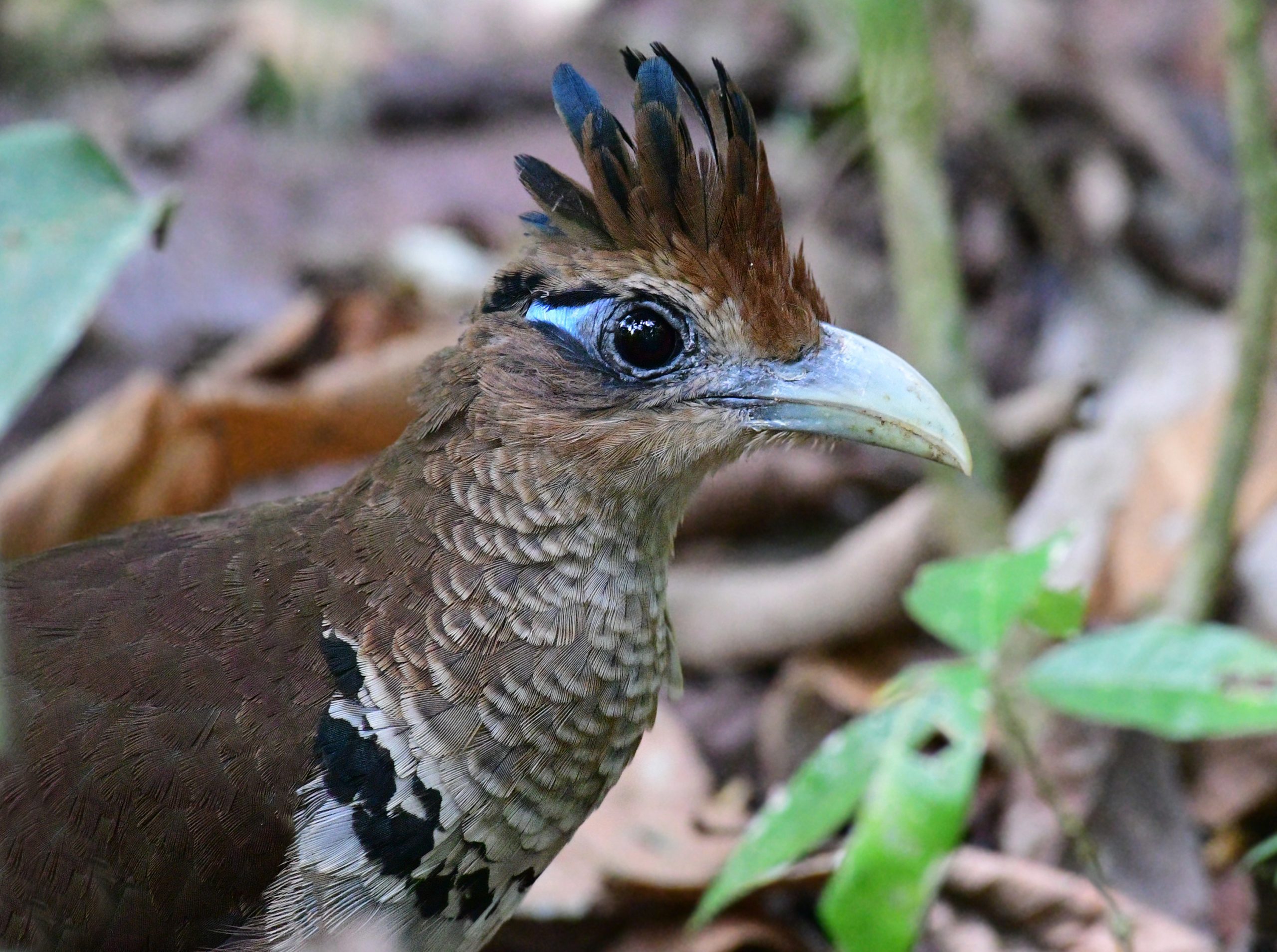
Meet Costa Rica’s Latest Bird Celebrity
It seems that nature, especially the avian sector, is doing everything possible to help reactivate tourism in Costa Rica. In late 2020, the country’s first known appearance of an Orinoco goose drew visitors from far and wide to the Rio Tarcoles, where boat tour operator José Eduardo was restarting his business after a series of misfortunes.
Now another rare bird has caused a similar sensation by triggering flocks of wildlife enthusiasts to an off-the-beaten path locale where tourist traffic is normally sparse. For birders hoping their “life list” might one day include a rufous-vented ground-cuckoo sighting in Costa Rica, it was a dream come true. Learn more about this highly sought-after bird species in Howler’s separate Howler Creature Feature article in May’s issue.
Tourists Flock to Pocosol for Rare Cuckoo Glimpse
Easy to see
Costa Rica’s latest celebrity bird tale begins the first weekend of February 2021, with an astonishing sighting at the Pocosol station of the Children’s Eternal Rainforest (Bosque Eternos de los Niños). A local guide and station staff spotted not a single bird, and not a pair, but as many as seven of these seldom-seen ground-cuckoos. Consistent with their feeding habits, the birds were following a swarm of ants, eating insects scurrying away in the front of the swarm. Remarkably, they were easy to see and showed no signs of fleeing the nearby human witnesses.
A post with photos appeared that Sunday on the Facebook page of the Asociación Ornitológica de Costa Rica (AOCR), Costa Rica’s largest orinological organization. Within 24 hours, the response became a goldrush. Extreme birders and guides, and many local guides, started making the trek to Pocosol station, located within the country’s largest private reserve.
Keep Those Rare Birds Showing Up
Birders are dedicated people. And they are good tourists. A study released by the Costa Rica Tourism Institute (ICT) discovered that visitors who come here to see the birds spend, on average, over twice as much per visit than other tourists.
Encompassing 23,000 hectares (58,000 acres) of protected forest, the reserve is run by the nonprofit Monteverde Conservation League

.
Operations are funded through
Children’s Eternal Rainforest donations from children in 44 countries. Best known for its access in Monteverde, the reserve also accommodates visitors on the La Fortuna side where the Pocosol station is located.
Despite offering a wonderful set of hiking trails, plus a beautiful lodge for overnight guests with reservations, Pocosol is one of the least visited stations, for one reason: it is NOT easy to get to!
For our excursion there were two ways in. The first was much shorter but crossed the river on perhaps the longest and scariest, and most poorly maintained bridges in the country. It is now closed for repairs. The other option takes a longer route up and down, then up again, through several hyd
roelectric projects until you finally reach the bad road to the lodge. Having a 4×4 vehicle is essential. In fact, getting to Pocosol is such an ordeal that a sign has been posted congratulating you on making the journey!
Needless to say, being the silly birders that we are, it was a trip not to be missed. Waking at 3 a.m., we packed and sneaked out an hour later (breaching pandemic driving restrictions) to make the 3.5-hour drive for us to get to the Pocosol.
Joining the crowd 
Climbing up the last hard kilometer to the lodge area we were met — to our surprise — by a parking attendant! T
he Pocosol station was a circus, and we were lucky to get the last parking space. Even arriving early, we encountered countless others who had beat us to it: dozens of guides, with other guides and friends or with clients, and rabid birders like us who had made the trip. The car next to us was filled with local guides from the Quepos and Manuel Antonio area, who had driven almost six hours to get there.
We walked onto the trail and, perhaps only 30 meters in, a crowd was gathered. Binoculars, spotting scopes, huge camera and video equipment on tripods were everywhere. A few minutes later the show started. The keen eyes of the crowd caught glimpses of the cuckoos and soon one of them just jumped up and sat on a branch, watching us and listening to the drone of cameras clicking thousands and thousands of photographs.
In this mob scenario, reserve guides did an excellent job of enforcing the use of masks and distancing. About 10 minutes into all of us clicking photo after photo, the guides announced we were welcome to visit other areas along the reserve trails. But we had to move on and make way for the next big group of “paparazzi” waiting to come down!
The upside for tourism at the reserve was there were no rooms to be had at the Pocosol Lodge. Proceeds from the day-pass entry fee and donation jars brought a badly needed influx of money for the station, after months of taking a hit during pandemic closures.
We spent the night at the Chachagua Rainforest Hotel & Ecolodge, hiring their local guide to show us around the grounds the next morning as a way to help the local economy.
